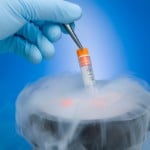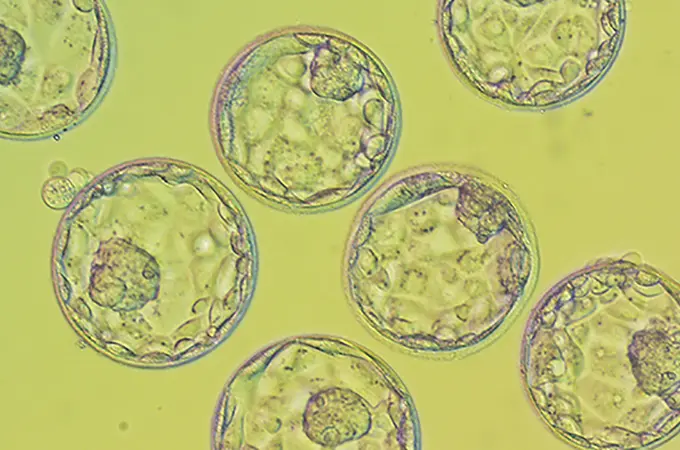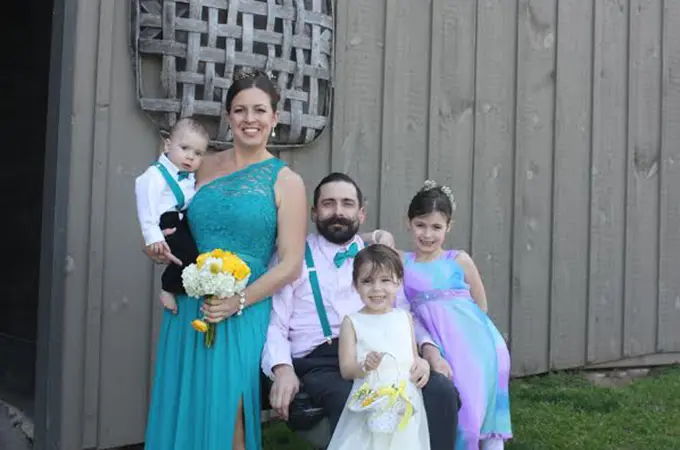
NPR’s The Diane Rehm Show convened an expert panel to debate an issue brought to light by the dispute between actress Sofia Vergara and her ex-boyfriend, Nick Loeb: what do you do with your unused frozen embryos?
Eric A. Widra, M.D., medical director of Shady Grove Fertility, was joined on this panel by Tamar Lewin, national reporter, The New York Times; Naomi Cahn, professor, The George Washington University Law School; and Arthur Caplan, director of the division of medical ethics, New York University Langone Medical Center.
Why do we suddenly have this unique challenge with unused frozen embryos?

In the past, freezing technology worked, but the process had flaws. As science and technology have progressed, the ability to save and freeze embryos for the future with high success rates is now similar to that of fresh embryos. With many couples now succeeding more quickly with treatment, more couples have to decide what to eventually do with their unused frozen embryos down the road.
Why have the frozen embryos themselves become so controversial?
Now that frozen embryos can sit in storage indefinitely and still have future potential to yield a pregnancy, new ethical questions arise. Are these embryos potential children? Are they biological tissue? What is an individual’s responsibility to these embryos?
In countries like Ireland, this discomfort about the question of personhood (i.e. is an embryo considered to be a person?) has yielded laws requiring that all embryos be transferred back to a woman so that the issue of frozen embryos does not arise. But this can, in turn, create the issue of pregnancies with higher-order multiples, which puts the mother and babies at risk. In the United States, this is not the law and elective single embryo transfer (eSET) is actually preferred—transferring a single embryo to the woman rather than incur the risks present with multiple pregnancies.
What about controversies of ownership like in the case of Sofia Vergara and Nick Loeb?
The controversy about Sofia Vergara and Nick Loeb’s frozen embryos is an interesting one because there was a signed agreement in place specifying that the embryos must remain in medical storage unless both parties were in agreement.
So if such an agreement exists, why does the controversy exist at all?

Unfortunately many couples don’t really consider this particular issue at the start of their fertility journey. Their struggle to conceive has been so difficult that it’s hard for them to imagine a situation in which they could complete their family and still have extra embryos remaining in storage. At Shady Grove Fertility, couples are presented with forms before treatment begins that each person must sign. Couples have to indicate what would happen with the embryos in the event of a split or divorce or in the case of one partner’s death. Lack of legislation in this area creates enough question marks that—despite existing agreements—some of these cases do end up in court.
Do any states have laws regarding frozen embryos?
Only a few states currently have laws. California requires reproductive endocrinologists to provide patients with their options in the event that they do not want to use their frozen embryos. In Florida, a fertility clinic needs a signed agreement from both parties about what to do in the event of separation, divorce, or death (like the agreements that Shady Grove Fertility presents to patients), but in the absence of such an agreement, the state’s law determines what happens to the frozen embryos.
What options are available for couples who choose not to use their excess frozen embryos?
- Donate to research
While stem cell research doesn’t really occur with embryos due to moral, scientific, and political complications, there are some research opportunities with embryos that try to answer basic biological questions about reproduction.
- Donate to another family
Embryo donation is growing, with more than 1,000 children being born through this method each year. SGF and many other clinics are working to come up with better donation practices. There is a need to expand the ability for couples to donate, whether to another couple anonymously or conditionally. SGF is testing new resources that are designed to bring patients together from across the nation who want to donate and receive embryos. These resources will provide education for patients who want to know their options and will provide access to fertility centers that can make this donation possible.
- Discard the embryos
The American Society for Reproductive Medicine (ASRM) says that if a couple abandons their unused frozen embryos and the fertility clinic cannot reach the family to receive disposition instructions, the fertility clinic can decide to destroy the embryos after 5 years.
Some people refer to donating embryos as adoption. Is that an accurate name for this concept?

Calling embryo donation an adoption brings this debate into very controversial territory. As Dr. Widra says, this is not adoption as there are some embryos that have very limited potential and will never become a child. This is the donation of biological tissue to solve infertility.
Do you think more regulation in the field of reproductive medicine could help with the issue of unused frozen embryos?
The problem with regulation in the field can be the creation of unintended consequences. When legislation has arisen in the past, it often came with personhood amendments attached, which could have repercussions for fertility patients while in treatment and during their actual pregnancies.
That being said, while regulation isn’t the answer, stronger informed consents will help eliminate many frozen embryo controversies. Legally-binding documents that insure that couples make decisions about these embryos before treatment will go a long way to making cases like Vergara and Loeb’s into a thing of the past. Additionally, more clinics providing their patients with embryo options will help people make the best decision for them and their unused frozen embryos.
If you would like to learn more about frozen embryos or to schedule an appointment, please speak with one of our New Patient Liaisons at 877-971-7755.
Editor’s Note: This blog post was originally published in July 2015, but was reviewed and updated for accuracy in December 2018.




